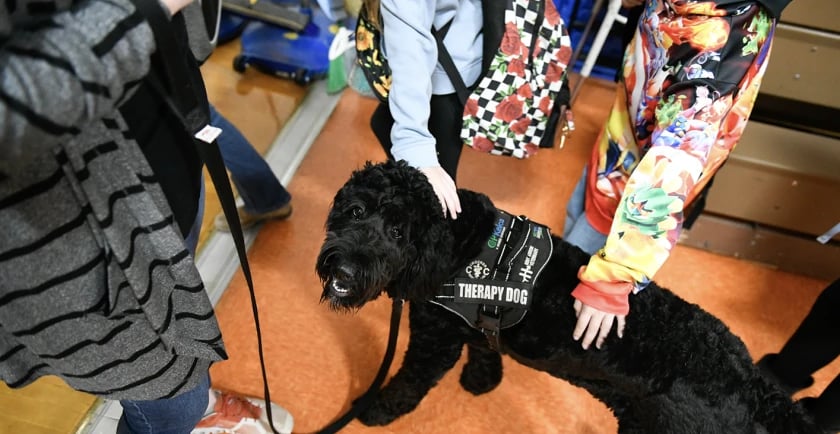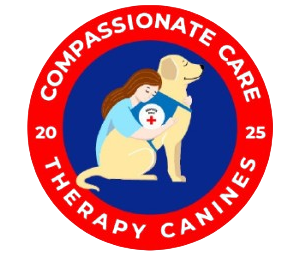Exploring the Role of Therapy Dogs: More Than Just Adorable Companions
4/20/20253 min read


Therapy dogs are familiar figures in various settings, from the gentle giants in hospitals to the furry companions in school libraries and the comforting presences in nursing homes. However, their roles extend far beyond their charming appearances and wagging tails. What specific contributions do these four-legged heroes make? Therapy dogs are often misunderstood as mere pets accompanying visitors; however, they are specially trained animals, predominantly dogs, that are certified to offer affection, comfort, and support in diverse therapeutic environments. Their function extends beyond being endearing companions, as they significantly contribute to emotional and physical healing processes.
The Element of Comfort: Beyond Simple Affection
The primary role of a therapy dog is to offer comfort and alleviate stress. Research has demonstrated that the act of petting a dog can significantly lower blood pressure, trigger the release of endorphins, and reduce cortisol levels, which is known as the stress hormone. This biological reaction can be remarkably beneficial, particularly for those facing challenges such as:
Anxiety and Depression: The unwavering love and acceptance provided by a therapy dog can significantly uplift individuals facing mental health difficulties. Their companionship can facilitate social interactions and diminish feelings of isolation.
Loneliness and Isolation: In environments such as nursing homes, therapy dogs serve as a source of companionship, fostering connections to the outside world and alleviating feelings of loneliness, thereby enhancing overall well-being.
Trauma and PTSD: Individuals who have experienced trauma often find comfort in the accepting presence of a therapy dog. Engaging with the dog through petting can help them remain anchored in the present and instill a sense of security.
Beyond Emotional Assistance: Facilitating Physical Rehabilitation
The advantages of therapy dogs reach far beyond enhancing emotional health; they also contribute significantly to physical rehabilitation and recovery. For instance, interaction with a therapy dog can stimulate movement and enhance coordination, which is especially advantageous for individuals recovering from strokes or dealing with mobility challenges. Additionally, research indicates that engaging with animals can diminish the perception of pain, offering a natural and soothing method of pain relief. Furthermore, in rehabilitation environments, therapy dogs serve as a source of motivation, encouraging patients to engage in physical therapy exercises, thereby making the experience more enjoyable and less intimidating.
The advantages of therapy dogs reach far beyond enhancing emotional health; they also contribute significantly to physical rehabilitation and recovery. For instance, interaction with a therapy dog can stimulate movement and enhance coordination, which is especially advantageous for individuals recovering from strokes or dealing with mobility challenges. Furthermore, research indicates that engaging with animals can diminish the perception of pain, offering a natural and soothing method of pain relief. Additionally, in rehabilitation environments, therapy dogs serve as a source of motivation, encouraging patients to engage in physical therapy exercises, thereby making the experience more enjoyable and less intimidating.
Where can therapy dogs be located?
Hospitals and healthcare facilities play a crucial role in enhancing patient comfort during treatment, alleviating anxiety prior to procedures, and creating a more supportive atmosphere. In educational settings such as schools and libraries, initiatives aim to assist children in overcoming reading-related anxiety, provide companionship during high-pressure exams, and cultivate a passion for learning. Nursing homes and assisted living facilities focus on addressing feelings of loneliness, encouraging cognitive engagement, and restoring a sense of normalcy for residents. Additionally, disaster relief efforts are essential in delivering emotional support and solace to both victims and first responders following traumatic incidents.
The Education That Fuels the Tail Wags:
Achieving certification as a therapy dog is a challenging process. These dogs must complete extensive training and assessments to demonstrate several key qualities. First, they are required to have a calm and gentle demeanor, showing tolerance towards strangers, loud sounds, and sudden movements. Additionally, they must exhibit strong obedience skills, responding consistently to commands and maintaining control in different scenarios. Finally, effective socialization and desensitization are essential, as they need to feel at ease when engaging with a wide variety of individuals and settings.
A Companion in Recovery: Beyond the Role of a Pet
Therapy dogs serve a purpose that extends beyond their adorable appearance; they play an essential role in promoting healing and enhancing well-being. Their companionship can significantly reduce stress, foster emotional bonds, and aid in physical recovery. Recognizing the true significance and influence of these extraordinary animals allows us to understand the substantial impact they have on many lives. Therefore, when you encounter a therapy dog, consider that behind their friendly demeanor lies a trained professional committed to providing comfort, hope, and healing to those in need.
Compassionate Care Therapy Canines, Inc
A 501(3)(c) non-profit: EIN: 33-4426479
Phone: 707.497.7166
Email: therapycanines@yahoo.com
Mail: CCTC
POB 27
Trinidad, CA 95570
© 2025 by Compassionate Care Therapy Canines, Inc. All rights reserved.


They Train. They Serve. They Heal.
At Compassionate Care Therapy Canines, Inc, our trained volunteers and certified therapy dogs are devoted to healing lives in our communities with programs designed to meet the unique needs of each person we serve using the mutually nurturing relationship between people and dogs.


